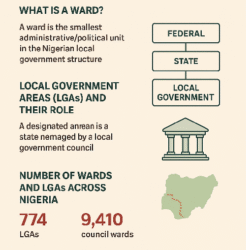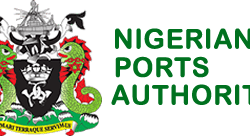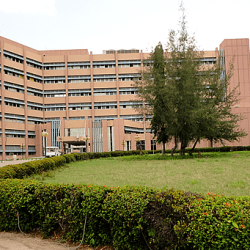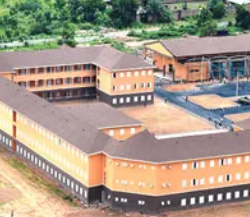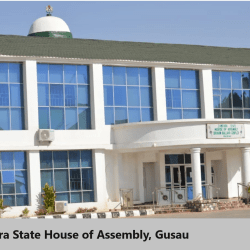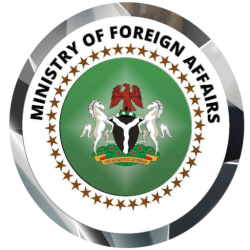There are 30 Local Government Councils in Osun State, with one additional area office. The Local Governments and their headquarters are:
| LGA Headquarters |
| Atakunmosa East Iperindo |
| Atakunmosa West Osu |
| Ayedaade Gbongan |
| Ayedire Ile-Ogbo |
| Boripe Iragbiji |
| Boluwaduro Otan-Ayegbaju |
| Ede North Oja-Timi, Ede |
| Ede South Ede |
| Egbedore Awo |
| Ejigbo Ejigbo |
| Ifedayo Oke-Ila |
| Ifelodun Ikirun |
| Ife-North Ipetumodu |
| Ife-Central Ile-Ife |
| Ife-East Modakeke |
| Ife-South Ifetedo |
| Ila Ila-Orangun |
| Ilesa-East Ilesa |
| Ilesa-West Ereja Square (Ilesa) |
| Irepodun Ilobu |
| Irewole Ikire |
| Isokan Apomu |
| Iwo Iwo |
| Obokun Ibokun |
| Odo-Otin Okuku |
| Ola-Oluwa Bode-Osi |
| Olorunda Igbona |
| Oriade Ijebu-Jesa |
| Orolu Ifon-Osun |
| Osogbo Osogbo |
Osun State
Osun is a state in Nigeria. It is inhabited mostly by the Yorubas.
The Yoruba ethnic group live in large numbers in Oyo, Ogun, Ondo and Lagos states but Osun is culturally their central state.
- State Capital: Osogbo
- Statehood Day: August 27 , 1991
- Population: 3,423,535( 1996 National Census)
- Area Size: 14,875 (square kilometres)
- Median household Income: $50,614 (11th)
- Occupation: Agrarian (256,000 Farming Families)
- Area Cultivated:149,478 Hectares
- Nickname: State of the Virtuous (Ipinle Omoluabi)
- Hotspots: Osun Osogbo Groove, Erin Ijesha Waterfall, Ile-Ife
- Religion: Christianity, Islam and Traditional
The name ‘’Osun’’ comes from a river that flows through the state. It is symbolic because it serves both spiritual and tourist purposes in the state. The river is worshipped annually by devotees. It is also a tourist spot as people from different parts of the country visit the Osun Groove in Osogbo. The river also provides water for irrigation for the agriculturally rich state.

Yoruba tradition has it that Ile-Ife in the State of Osun is where Olodumare started the creation of the world. It represents the beginning of life, the birthplace of civilization, the embodiment of all that we see or feel.
Vision is the pathway and the guiding light into the future. This was what the founding fathers and agitators for the creation of a state to be named ‘’ Osun ‘’ had in mind and did everything possible to realise the vision. They weathered opposition and confronted obstacles for the generation past, present and unborn.
The struggle for the creation of Osun started as early as 1950.

At that time, the present senatorial districts namely Osun West, Central and part of Osun East were subordinate towns under the administration of Ibadan District Native Authority but in there determination to get independence, traditional rulers and citizens of Osun Area submitted a petition to the British Colonial Administration in Nigeria demanding autonomy for Osun Division, with Osogbo proposed as the headquarters

To realise their aim, they pursued this agenda further in 1951, when a Commission Of Inquiry was set up the Colonialists, headed by H.L Butcher primarily saddled with investigating the crisis in Ibadan District Native Authority between Chief Salami Agbaje and Olubadan-in-Council. At this commission, named H.L Butcher Commission of Inquiry, a representation was made by people of Osun Area reiterating their resolve for autonomy. This demand was granted on March 17th 1951, thus recommending autonomy for Osun District Towns on April 1st 1951.
The resilience and doggedness of the founding fathers and crusaders for the creation of Osun was rewarded on August 27th 1991, when the administration of Gen Ibrahim Badamosi Babangida created nine states with Osun created out of Oyo State with Osogbo as the capital. It was a dream fulfilled and hope achieved.
Osun emboldens the history of a people whose quest for freedom, self-actualisation, determination and hope for a better tomorrow fought and won the battle for its creation. It was a dream fulfilled and hope achieved.
Osun has a fairly large population. According to the 2006 National Population Census, the population of the state is put at 3,423,535. The state is rich in human and material resources
Historical evidence shows that the Yoruba tradition is one of the earliest and dominant traditions in Nigeria. The people of Osun are predominantly Yoruba. The state is composed of Osun, Ifes, Ijesas and Igbominas. Their language is Yoruba but there are variations in intonation and accent in across the towns and cities.
Commercial activities have brought the people of the state in contact with non-indigenes and foreigners who have adopted the state as their homes owing to the peaceful nature of the people and prevalent atmosphere.
Osun is culturally rich and this can be seen in all spheres of life such as arts, literature, music and other social activities in the state. Similarly, the state is blessed with a highly literate and articulate populace which makes up a strong and productive workforce

